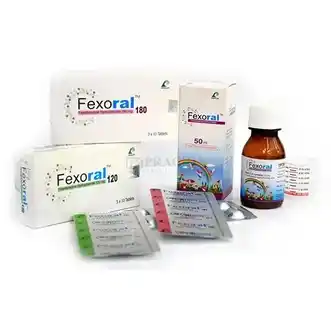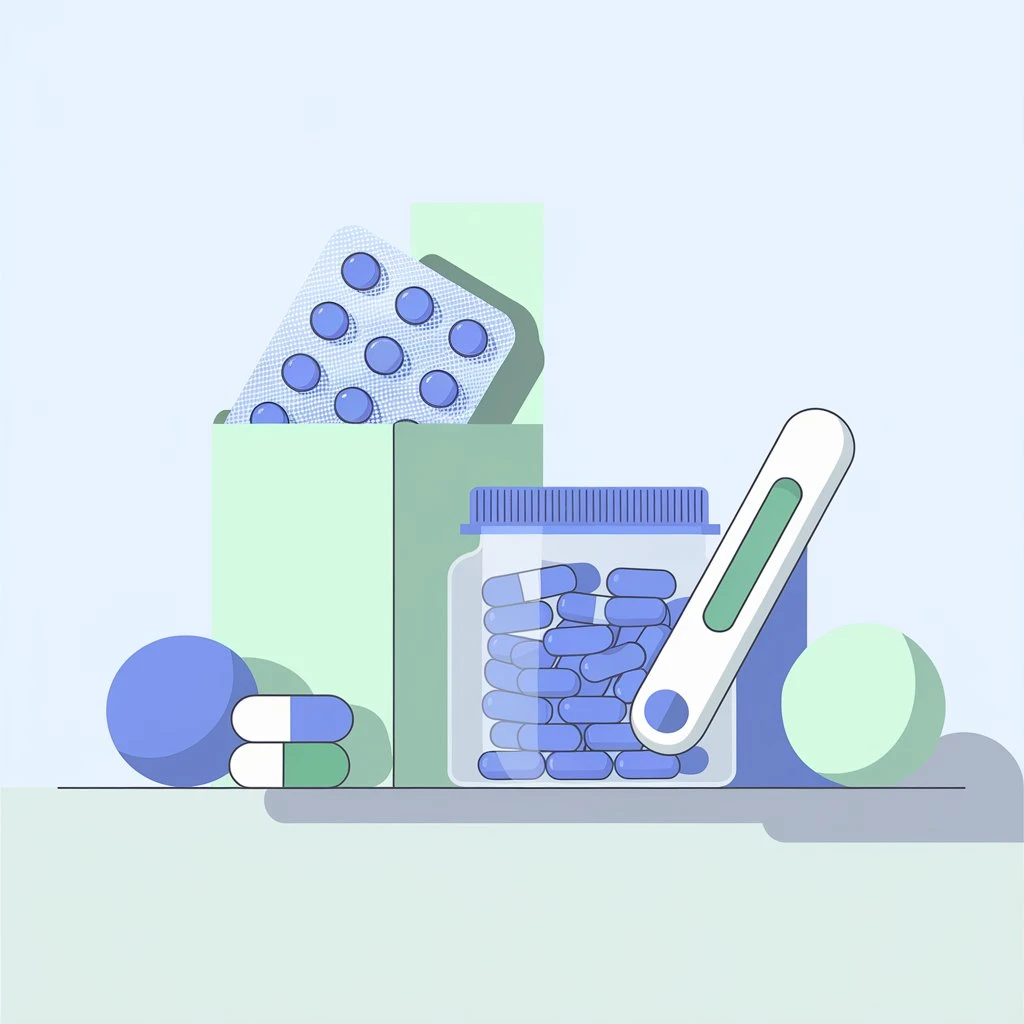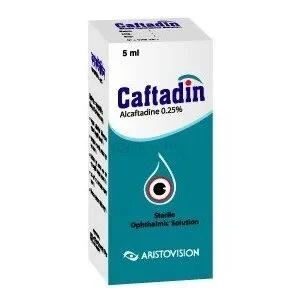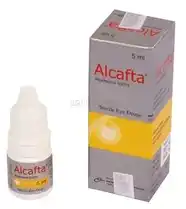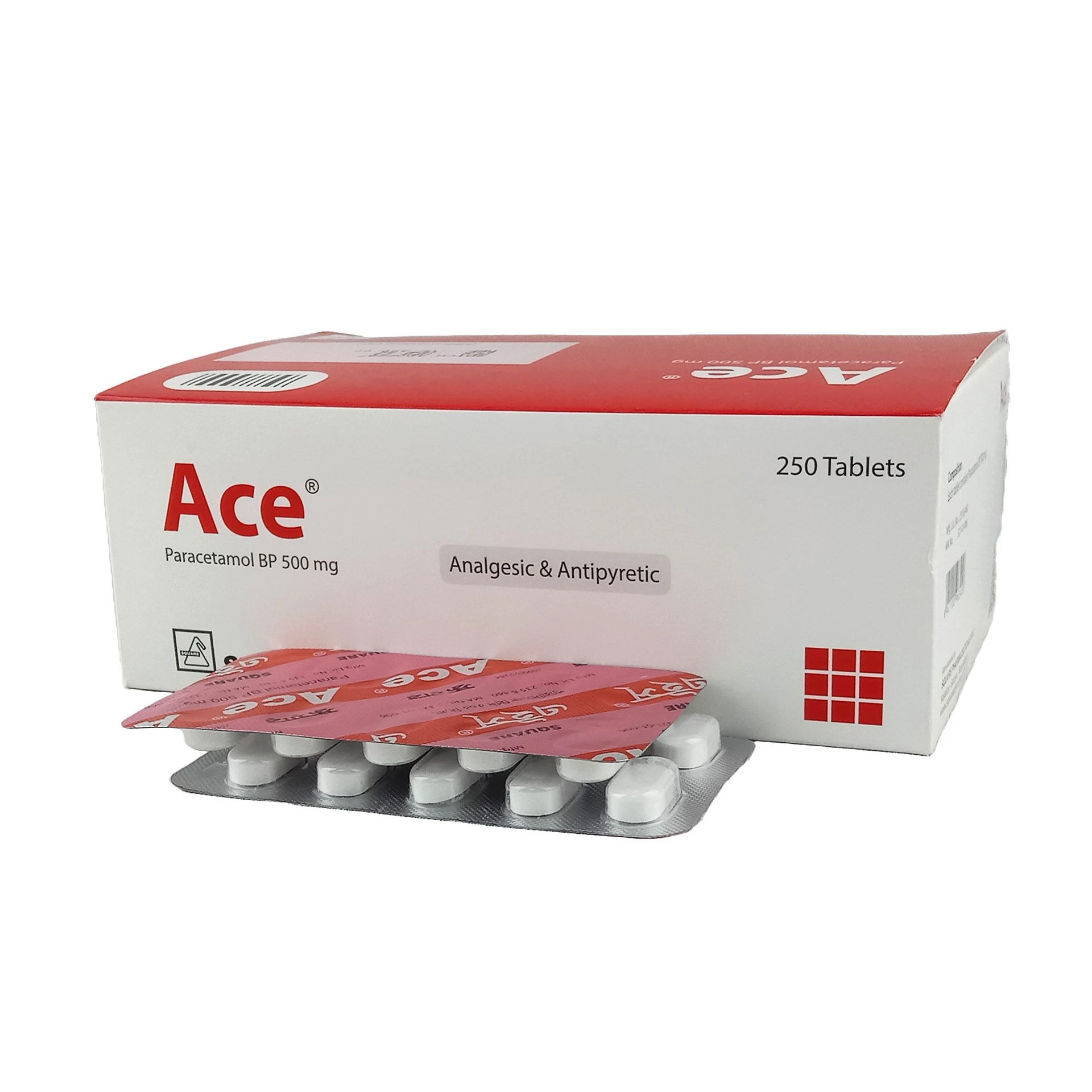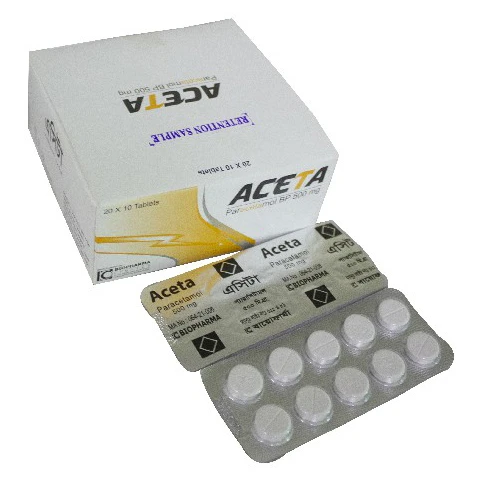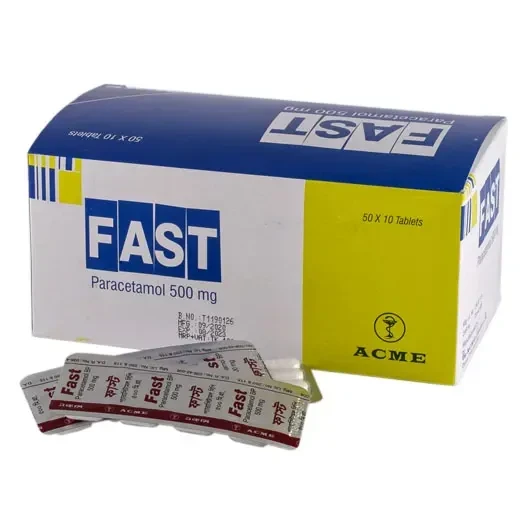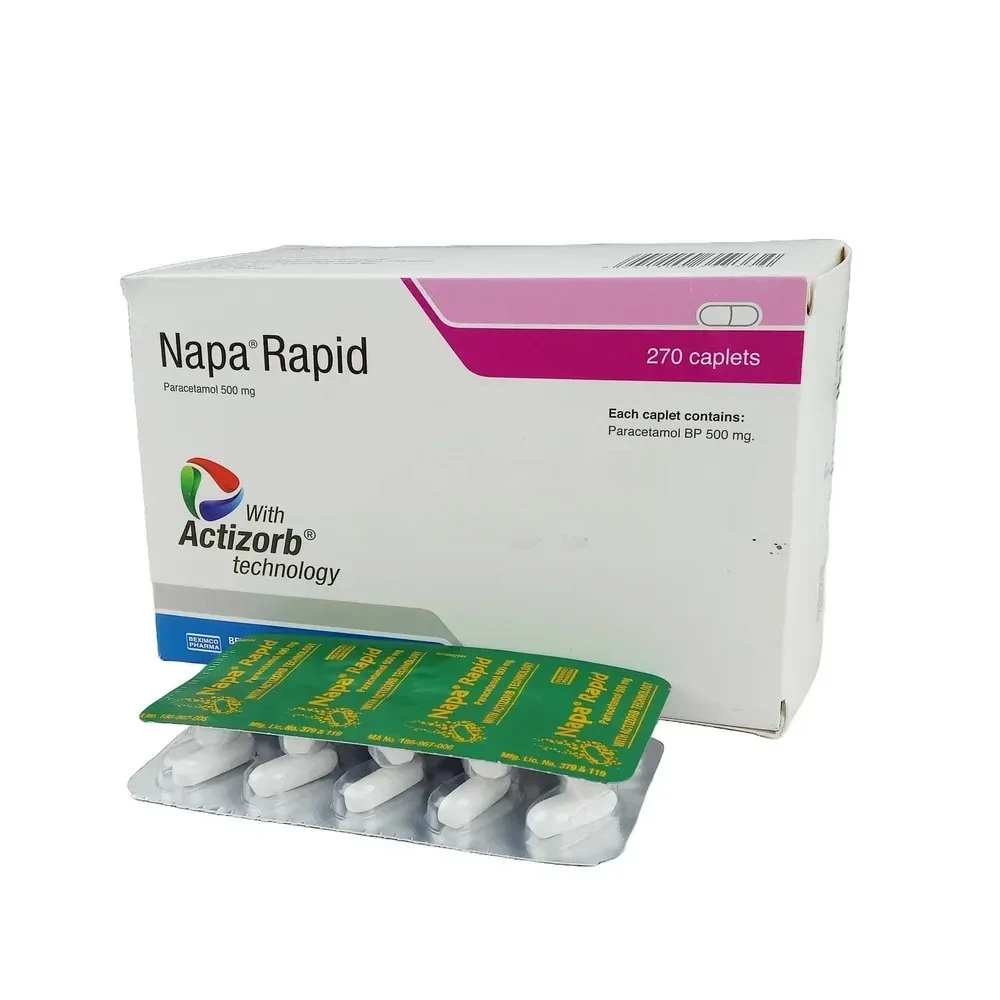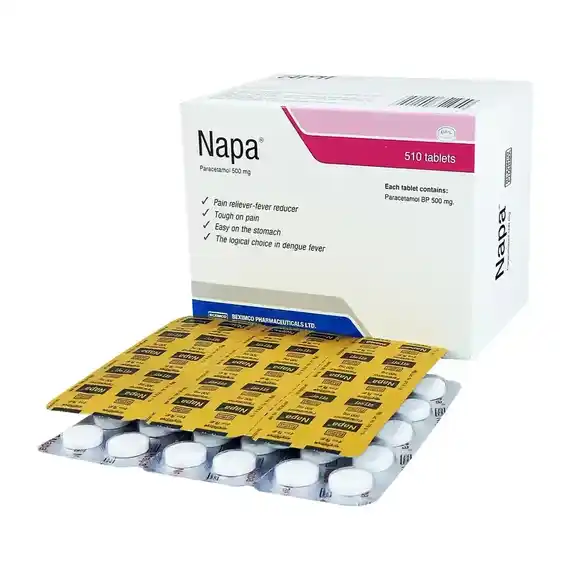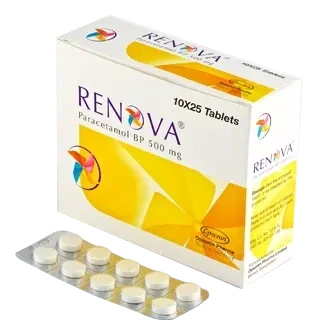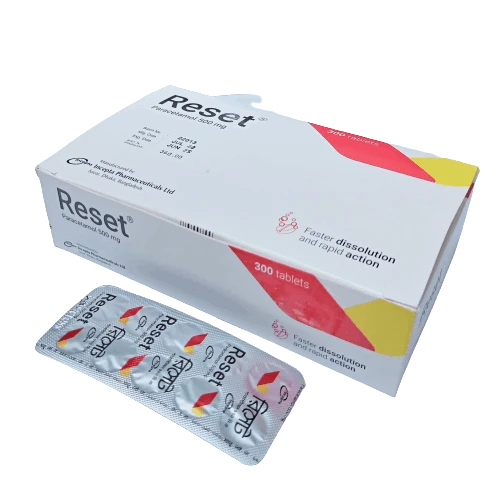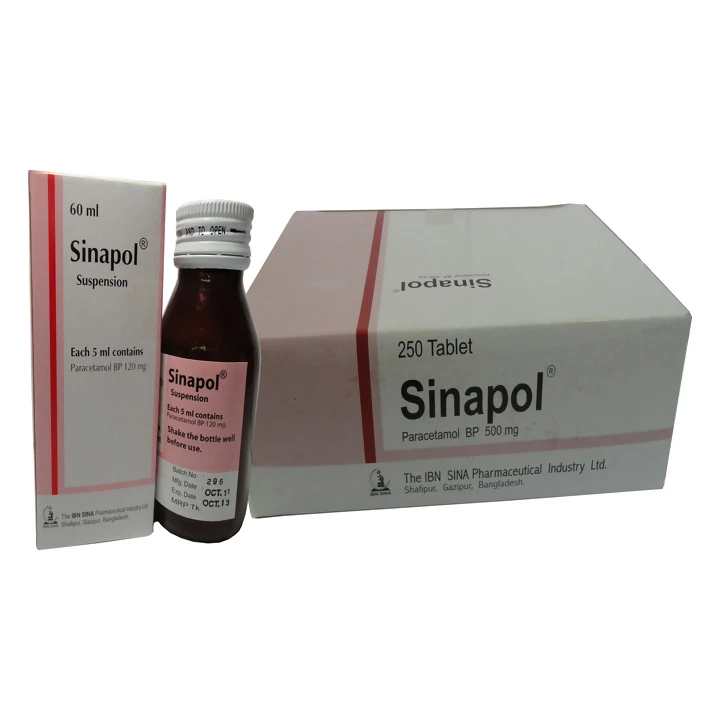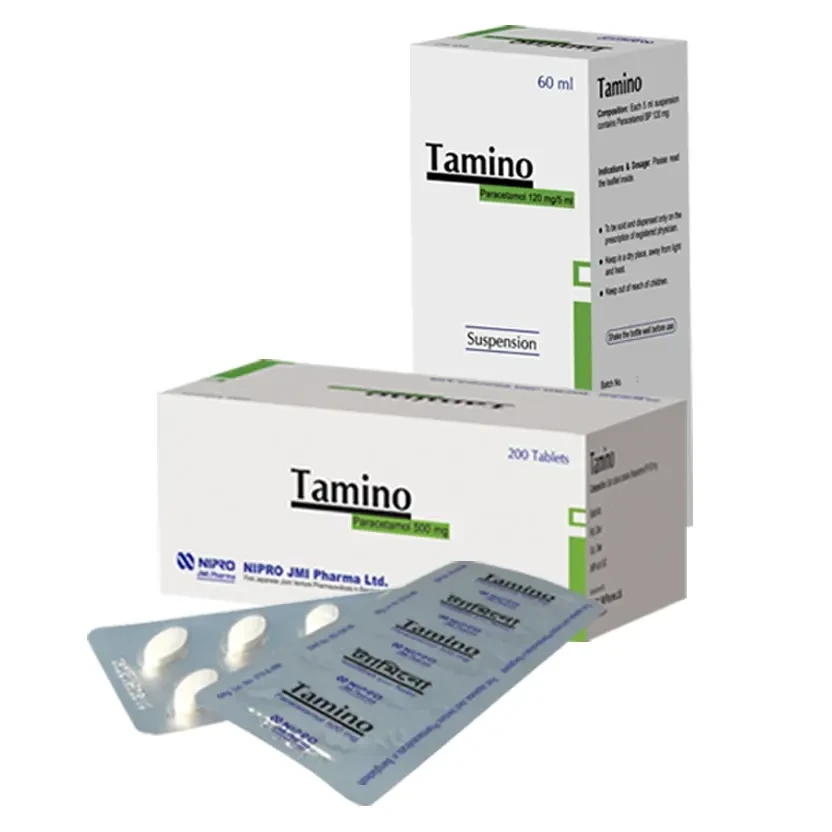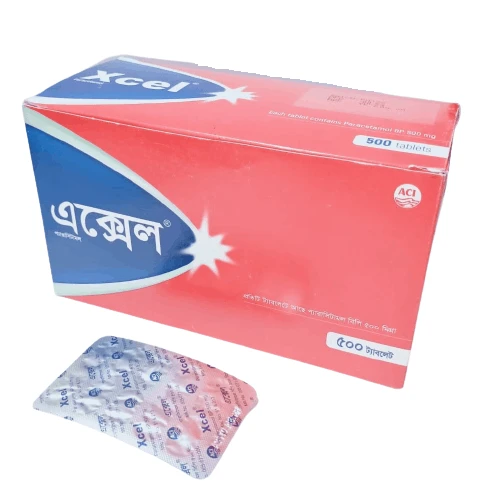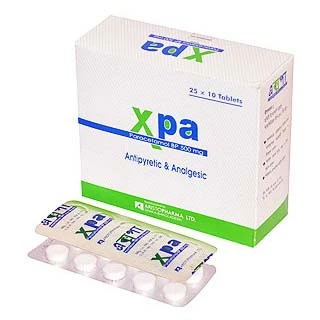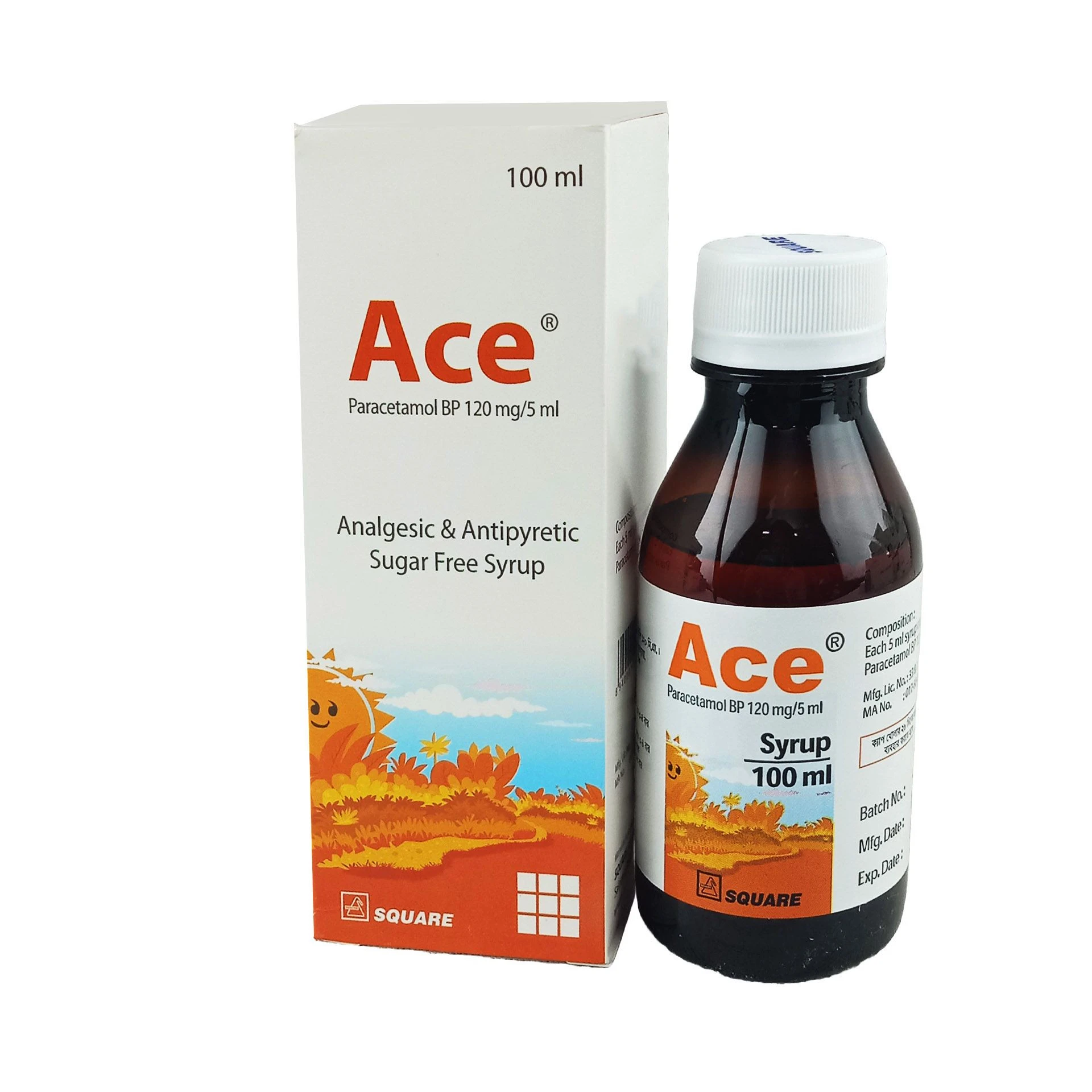Indications
Allergic rhinitis: Fexoral is indicated for the relief of symptoms associated with seasonal and perennial allergic rhinitis, in adults and children 12 years of age and over. Symptoms treated effectively include sneezing, rhinorrhea, lacrimation, itchy, red eyes and itchy nose/palate/throat .
* রেজিস্টার্ড চিকিৎসকের পরামর্শ মোতাবেক ঔষধ সেবন করুন'
Pharmacology
The H1 histamine receptor is responsible for mediating hypersensitivity and allergic reactions. Exposure to allergen results in the degranulation of mast cells and basophils, which then release histamine and other inflammatory mediators. Histamine binds to, and activates, H1 receptors, which results in the further release of pro-inflammatory cytokines, such as interleukins, from basophils and mast cells. These downstream effects of histamine binding are responsible for a wide variety of allergic symptoms, such as pruritus, rhinorrhea, and watery eyes.
Fexofenadine is considered an "inverse agonist" of the H1 receptor because it binds to and stabilizes the inactive form of the receptor, preventing its activation and subsequent downstream effects. It has a potent and selective affinity for H1 receptors, and there is no evidence that it carries antidopaminergic, antiserotonergic, anticholinergic, sedative, or adrenergic blocking activity. Fexofenadine does not cross the blood-brain barrier and thus is unlikely to cause significant CNS effects.
Dosage & Administration
Allergic Rhinitis-
Adults and children 12 years and older:
Tablet: 60 mg twice daily or 120 mg once daily or 180 mg once daily
In case of impaired renal function: 60 mg once daily
Children from 6 to 11 years:
Tablet: 30 mg twice daily or 60 mg once daily
In case of impaired renal function: 30 mg once daily
Children from 2 to 11 years
Suspension: 30 mg or 5 ml twice daily
In case of impaired renal function: 30 mg or 5 ml once daily
Chronic Idiopathic Urticaria-
Adults and children 12 years and older:
Tablet: 60 mg twice daily or 120 mg once daily or 180 mg once daily
In case of impaired renal function: 60 mg once daily
Children from 6 to 11 years:
Tablet: 30 mg twice daily or 60 mg once daily
In case of impaired renal function: 30 mg once daily
Children from 6 months to less than 2 years:
Suspension: 15 mg or 2.5 ml (1/2 tsp) twice daily
In case of impaired renal function: 15 mg or 2.5 ml (1/2 tsp) once daily
Children from 2 to 11 years:
Suspension: 30 mg or 5 ml (1 tsp) twice daily
In case of impaired renal function: 30 mg or 5 ml (1 tsp) once daily
* রেজিস্টার্ড চিকিৎসকের পরামর্শ মোতাবেক ঔষধ সেবন করুন'
Interaction
Fexoral does not undergo hepatic biotransformation and therefore will not interact with other medicinal products through hepatic mechanisms. Coadministration of Fexoral with erythromycin or ketoconazole has been found to result in a 2-3 times increase in the level of fexofenadine in plasma. The changes were not accompanied by any effects on the QT interval and were not associated with any increase in adverse reactions compared to the medicinal products given singly. No interaction between fexofenadine and omeprazole was observed. However, the administration of an antacid containing aluminium and magnesium hydroxide gels 15 minutes prior to Fexoral caused a reduction in bioavailability, most likely due to binding in the gastrointestinal tract. It is advisable to leave 2 hours between administration of Fexoral and aluminium and magnesium hydroxide containing antacids.
Contraindications
Contraindicated in patients with known hypersensitivity to Fexofenadine Hydrochloride or any of its ingredients.
Side Effects
The following frequency rating has been used, when applicable: Very common ≥1/10; Common ≥1/100 and <1/10; Uncommon ≥1/1,000 and <1/100; Rare ≥1/10,000 and <1/1,000; Very rare <1/10,000 and not known (frequency cannot be estimated from the available data). Within each frequency grouping, undesirable effects are presented in order of decreasing seriousness. In adults, the following undesirable effects have been reported in clinical trials, with an incidence similar to that observed with placebo: Nervous system disorders- Common: headache, drowsiness, dizziness; Gastrointestinal disorders- Common: nausea; General disorders and administration site conditions- Uncommon: fatigue. In adults, the following undesirable effects have been reported in post-marketing surveillance. The frequency with which they occur is not known (cannot be estimated from available data): Immune system disorders- hypersensitivity reactions with manifestations such as angioedema, chest tightness, dyspnoea, flushing and systemic anaphylaxis; Psychiatric disorders- insomnia, nervousness, sleep disorders or nightmares/excessive dreaming (paroniria); Cardiac disorders- tachycardia, palpitations; Gastrointestinal disorders- diarrhea; Skin and subcutaneous tissue disorders- rash, urticaria, pruritus
Pregnancy & Lactation
There are no adequate data from the use of Fexofenadine hydrochloride in pregnant women. Limited animal studies do not indicate direct or indirect harmful effects with respect to effects on pregnancy, embryonal/foetal development, parturition or postnatal development. Fexofenadine hydrochloride should not be used during pregnancy unless clearly necessary.
There are no data on the content of human milk after administering Fexofenadine hydrochloride. However, when Terfenadine was administered to nursing mothers Fexofenadine was found to cross into human breast milk. Therefore, Fexofenadine hydrochloride is not recommended for mothers breast-feeding their babies. No human data on the effect of Fexofenadine hydrochloride on fertility are available. In mice, there was no effect on fertility with Fexofenadine hydrochloride treatment.
Precautions & Warnings
As with most new medicinal products there is only limited data in the older people and renally or hepatically impaired patients. Fexoral should be administered with care in these special groups. Patients with a history of or ongoing cardiovascular disease should be warned that, antihistamines as a medicine class, have been associated with the adverse reactions, tachycardia and palpitations.
Effects on ability to drive and use machines: On the basis of the pharmacodynamic profile and reported adverse reactions it is unlikely that Fexoral tablets will produce an effect on the ability to drive or use machines. In objective tests, Fexoral has been shown to have no significant effects on central nervous system function. This means that patients may drive or perform tasks that require concentration. However, in order to identify sensitive people who have an unusual reaction to medicinal products, it is advisable to check the individual response before driving or performing complicated tasks.
Use in Special Populations
Renal and hepatic impaired patient: The pharmacokinetics of fexofenadine are altered in individuals with renal impairment. Based on increases in bioavailability and half-life, a dose of 60 mg once daily is recommended as the starting dose in patients with decreased renal function. Moderate to severe hepatic disease does not affect the pharmacokinetics of fexofenadine substantially.
Elderly patient: Adverse events were similar in this group compared to patients under 65 years of age. Nevertheless, the pharmacokinetics of fexofenadine is altered (increased bioavailability) in individuals over 65 years of age.
Overdose Effects
Dizziness, drowsiness, fatigue and dry mouth have been reported with overdose of Fexoral. Single doses up to 800 mg and doses up to 690 mg twice daily for 1 month or 240 mg once daily for 1 year have been administered to healthy subjects without the development of clinically significant adverse reactions as compared with placebo. The maximum tolerated dose of Fexoral has not been established. Standard measures should be considered to remove any unabsorbed medicinal product. Symptomatic and supportive treatment is recommended. Haemodialysis does not effectively remove Fexoral from blood.
Therapeutic Class
Non-sedating antihistamines
Storage Conditions
Keep in a dry place away from light and heat. Keep out of the reach of children.



